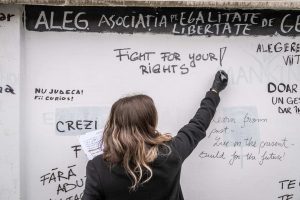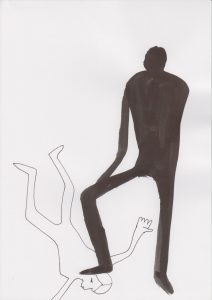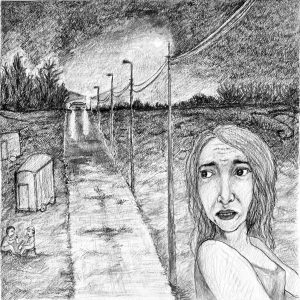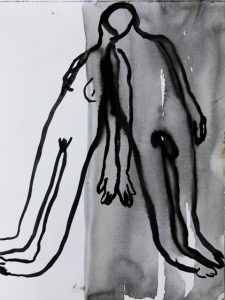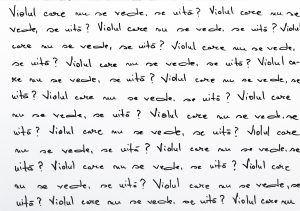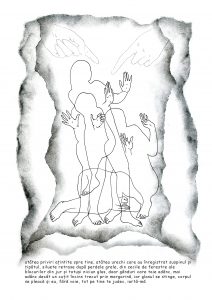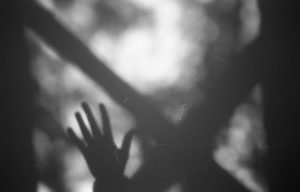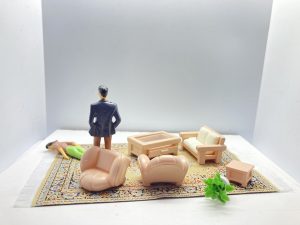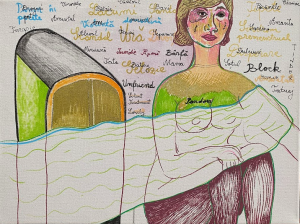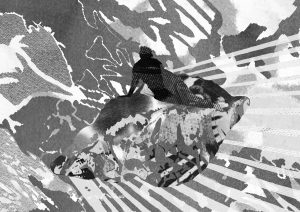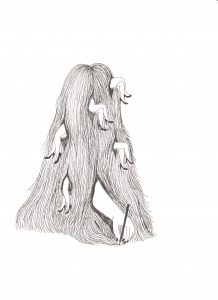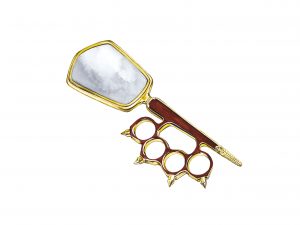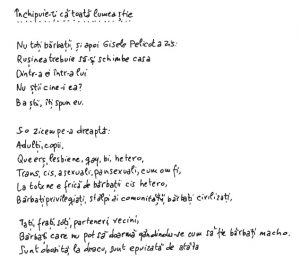The newspaper you now hold in your hands is our contribution to the dialogue about violence against women, to the work of building a world where each woman’s integrity is a priority and will no longer be harmed. The works of the 12 artists represent reactions to different forms of aggression, as well as gestures and strategies of healing and reclaiming personal safety—illustrating a collective effort to approach this subject both affectively and politically. We believe that art has the advantage of representing a safe shelter, even if not a comfortable one, both imagined and grounded in reality, from which we can honestly analyze the world and reflect with clarity on ways to transform it. We are stronger together, when we connect, understand, and support one another. We want to build and amplify healthy social models, based on dialogue and solidarity.
Asociația pentru Libertate și Egalitate de Gen (The Association for Freedom and Gender Equality A.L.E.G.) is a non-governmental organisation active since 2004 in promoting gender equality and preventing violence against women, with the mission of helping people live free from abuse and violence.
A.L.E.G. offers free counselling and psychological support to women facing domestic violence and to their children.
The subject of violence against women is taboo throughout society. Some pretend it barely exists, others are ashamed to put it into words, while women are afraid and ashamed to speak, because they don’t know whom they can trust. The drawings reproduced here are about a woman I met only briefly, and they are among my few works on this theme. I prefer to speak about violence against women, because in doing so I can reach more people, in different contexts, given that it is still a subject often avoided.
My artwork, Belina Island, illustrates a scene from the investigative documentary of the same name, produced by Passport Productions in 2019. The documentary exposes the corruption of the Dragnea era surrounding the island. In the scene I illustrated, a local man recounts how a well-known Romanian singer was found at night on the side of the road, after fleeing one of the parties hosted by politicians on the island, where something serious and abusive had occurred.
“The expression of feminine corporeality is very present in my art. Starting from the fact that women are made vulnerable, especially through their social status, I try to convey, through my characters, the idea of breaking free from the sphere of insecurity. As a woman, you often feel unsafe, unprotected. Yes, we also have the capacity to bear a lot, but at the same time I sense an obstacle to our evolution, something strongly determined by society and education: from family to friends, you are expected to keep up with the pace of life like everyone else; if you happen to be hors cadre (outside the frame, different), it is no longer acceptable.”
Violence against women in Romanian society is, unfortunately, a harsh reality. The further one moves away from major university centers toward rural Romania, the more visible and frequent this violence becomes — statistics say it, the news confirms it.
My works on this subject arose as direct responses to events that shook the collective conscience, if only briefly.
I grew up carrying the shame of others and the pain of an unhealed mother, while being judged in exactly the same way as she was. My works speak of this traumatic inheritance, of how deeply domestic violence imprints itself not only on a woman’s body but also on the mind of the child who witnesses it. They form an archive of painful memories, an attempt to transform shame into form and trauma into awareness. Because education, dialogue, and art can sometimes be the beginning of healing.
For me, violence against women is not an abstract theme — I have gone through direct forms of abuse, both physical and emotional, and I still carry their traces within me. For a long time, I kept silent, because every time I spoke — about what happened to me or about things I found unacceptable — I was immediately rebuked: I was “commenting,” “looking for trouble,” “crazy.” These reactions hurt, but above all, they exhaust. I have always refused to submit to invisible rules, yet I am constantly penalized for it.
Why Women Choose the Bear (work in progress) is an art installation series with an explicitly educational purpose. Using symbolic imagery, such as theatrical reenactments of scenes that could — and do — take place in real life, it encourages viewers to reflect on the psychological and social factors behind choices shaped by instinct and gender-based violence.
I create works on this theme because I have seen and read enough about women abused within the family. Violence is a subject that deeply affects me. I am still unsure what concrete steps I could take to contribute in this direction.
Humanity is enormously varied in its beauty, complexity and depth. This is something that I seek to capture and convey through my art, distilling it into compositions that stimulate recognition and emotional responses with any observer, no matter who they are or where they might be in the world. My chosen approach is to identify distinctive local elements that are expressed in materials, fabrics, textures and patterns. I then collect, collate and combine them, layering them into evocative works that speak to the tapestry of our shared human experience.
My drawings are inhabited by mutating bodies, revealing their fragility, their monstrosity, their power, their beauty… they are machine bodies with surprising combinations, emerging from the dictates of a single way of being, to exist beyond appearances. I draw daily, and in this exercise I construct series of multiple possibilities that tell what it is like to be a body
In my work, I explore the commodification of women’s bodies through a series of objects and drawings. I seek to uncover how consumer culture transforms women into products, revealing the intricate power dynamics that underpin this objectification. Moreover, I highlight how societal expectations about how women should dress and present themselves extend beyond mere norms—they function as a subtle yet pervasive form of violence that enforces control, restricts personal freedom, and upholds oppressive standards.
Femicide, sexual violence and rape of women and people socialised as women, family annihilation, murder/suicide, abuse etc, get crammed together under the umbrella of “violence against women” as if all these are problems that concerns only women and can only be solved by them. Just like any other women’s issue, in the public sphere these are crowded in shame and whisper. At best.
